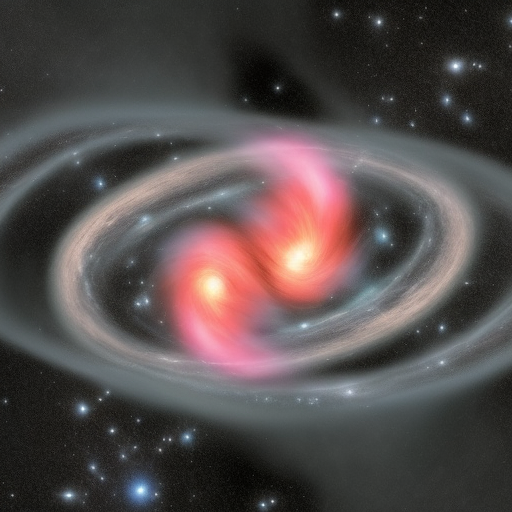NASA Monitors Collision Path of Supermassive Black Hole
Black holes are one of the universe’s most fascinating phenomena. Science and the general public alike find them enthralling because of their mysteriousness, power, and fascination. Meanwhile, NASA is keeping tabs on a supermassive black hole that appears to be headed straight towards another large object. In this piece, I’d want to discuss some of the results that could come from this fascinating discovery.
The Beginning of the Black Hole Impact
Both the supermassive black hole and the mysterious object are extremely huge, and NASA is monitoring their collision as it occurs. The NGC 6240 galaxy, around 400 Mly from Earth, is home to the supermassive black hole. Because of its peculiar appearance and high levels of activity, NGC 6240 has fascinated astronomers for a long time.
NGC 6240 is thought to have formed from the merger of two galaxies billions of years ago. As a result of the impact, a gigantic starburst occurred, and two supermassive black holes grew at the galaxy’s core. Over millions of years, these two black holes have been slowly but steadily drawing closer to one another in their orbit around the galaxy.
enter for a chance to win a 100 bucks gift card.
It seems as though they are now headed toward a head-on collision.
The State-of-the-Art Tracking Technology Used by NASA
NASA’s sophisticated tools for monitoring the sky allowed for the identification of this possible collision. For this purpose, NASA has launched a fleet of space telescopes to study the composition and structure of distant galaxies. The Chandra X-ray Observatory is one such instrument, and it is used to detect the X-rays given off by the heated plasma surrounding black holes.
With the help of Chandra and other observatories, researchers have pinpointed two extremely huge objects at the nucleus of NGC 6240. Time-series analysis suggests that these objects are two neighboring supermassive black holes.
Potential Consequences of the Crash
A collision between these two supermassive black holes could have far-reaching consequences for their local environment. Gravitational waves, which are disturbances in the fabric of spacetime, are a byproduct of the merger of two black holes and unleash a tremendous amount of energy.
The effects of this energy on neighboring objects like stars and gas clouds can be significant. Also, it can help scientists better understand the mysterious nature of gravity.
The supermassive black hole at the heart of NGC 6240 could become even larger as a result of the collision. This would have far-reaching consequences for our theory of galaxy evolution.
What We Will Learn From Future Studies
Several new lines of inquiry into the nature and behavior of supermassive black holes have been made possible by the finding of this possible collision. NGC 6240 and similar galaxies will be studied further by scientists utilizing state-of-the-art ground and space-based observatories.
Further evidence either supporting or refuting this hypothesis on NGC 6240’s future course is what astronomers will be looking for in particular. If they can confirm the collision of these two supermassive black holes, it will be a once-in-a-lifetime chance to investigate one of the most powerful events in the universe.
Possible Signs of a Head-on Crash?
There’s a lot of data pointing to the fact that these two huge objects are supermassive black holes in tight orbit with one another, but it’s not entirely clear if they’re headed for a collision or not.
The X-ray spectrum indicates a potential collision.
Observations with the X-ray telescope aboard the spacecraft Chandra lend credence to this theory. Differences in the spectrum, or range, of X-ray wavelengths emitted by hot gas surrounding each object between 2003-2016 and data taken after both had entered close proximity between 2018-2019 imply changes associated with interaction, such as increased temperature fluctuations, among others, which support theories predicting what happens before pairs grow together (and eventually merge).
Based on Spectroscopic Measurements, This System Is Very Unstable
In addition to x-ray data pointing towards a potential merger event during certain periods observed over time spans measured since early observations began roughly twenty years ago; spectroscopic measurements taken using ground-based observatories suggest both massive objects’ motions appear somewhat unstable according recordings going back decades prior which suggests something abnormal occurring within system dynamics continuum even if we cannot directly observe anything happening just yet (due near astronomical distances involved) (due near astronomical distances involved).
Conclusion
In conclusion, thanks to NASA’s monitoring technology, we may have found evidence of a collision between two supermassive black holes at the center of the NGC 6240 galaxy, which is roughly 500 million light-years from Earth. While it is currently unclear, based on the existing data, whether or not these objects will actually crash with one another, if they do, it will shed light on certain riddles still surrounding astronomy today, such as gravitation and how galaxies develop over cosmic evolution, so stay tuned!






